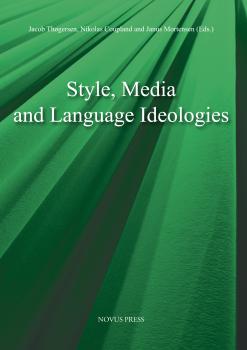Style, Media and Language Ideologies
Keywords:
Standard Language Ideology, language, mediaSynopsis
This book is the third publication from the international group of researchers involved in developing the SLICE programme, SLICE being an acronym for Standard Language Ideology in Contemporary Europe.
SLICE is interested in ideologies of language as much as in the forms and functions of languages themselves, and in exploring how ideology can be made visible by different research methods. This implies a commitment to researching the attitudes and value-structures that underpin attributions of ‘standard’, potential subjective complexities and shifts in these subjectivities.
One of SLICE’s key objectives is to make informed assessments of the extent and nature of linguistic destandardisation in contemporary European contexts. While sociolinguistic attention has so far been given to standardising processes – the mechanisms by which language varieties ‘rise’ to function ideologically and practically as standard varieties – it is also necessary to move beyond linear accounts and to explore whether and how varieties that have functioned as standards may be losing their legitimacy. Is there evidence that ways of speaking that have been positioned as ‘non-standard’ or vernacular varieties are ‘moving up’ to function in domains previously associated with standard varieties? More radically, is there evidence that the ideological systems that have supported attributions of standard and vernacular language may be crumbling, losing their potency or being restructured? Is it appropriate to see late modernity as an era when linguistic standardisation is in some ways and in some places being reversed, or at least rendered more complex and multi-dimensional?
Chapters
-
Preface and Acknowledgements
-
Introduction: Style, media and language ideologies
-
Bridging the gap(s): The role of style in language change linked to the broadcast media
-
Styling street credibility on the public byways: When the standard becomes ‘the dialect’
-
The style and stylization of old news reading in Danish
-
Kallemann & Amandus: The use of dialect in children’s programmes on early Norwegian radio
-
Negotiating linguistic standardization in Flemish TV fiction around 1980: Laying the grounds for a new linguistic normality
-
Dialect and local media: Reproducing the multi- dialectal hierarchical space in Limburg (the Netherlands)
-
Representations of multiethnic youth styles in Danish broadcast media
-
‘An evil version of our accent’: Language ideologies and the neighbouring other
-
Dialect dissonance: The mediation of indexical incoherence

Downloads
- 02 Styling street credibility on the public byways.pdf 02 Styling street credibility on the public byways.pdf
- 03 The style and stylization of old news reading in Danish.pdf 03 The style and stylization of old news reading in Danish.pdf
- 04 Kallemann & Amandus.pdf 04 Kallemann & Amandus.pdf
- 05 Negotiating linguistic standardization in Flemish TV fiction around 1980.pdf 05 Negotiating linguistic standardization in Flemish TV fiction around 1980.pdf
- 06 Dialect and local media.pdf 06 Dialect and local media.pdf
- 07 Representations of multiethnic youth styles in Danish broadcast media.pdf 07 Representations of multiethnic youth styles in Danish broadcast media.pdf
- 08 An evil version of our accent.pdf 08 An evil version of our accent.pdf
- 09 Dialect dissonance.pdf 09 Dialect dissonance.pdf
- Preface and Acknowledgements.pdf Preface and Acknowledgements.pdf
- Introduction- Style, media and language ideologies.pdf Introduction- Style, media and language ideologies.pdf
- 01 Bridging the gap(s).pdf 01 Bridging the gap(s).pdf
Forthcoming
Categories
License

This work is licensed under a Creative Commons Attribution-ShareAlike 4.0 International License.

